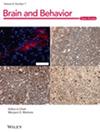Estimation of Stroke's Motor Function Ability Using Multimodal Biomarkers and the Role of Contralesional Motor Area
Abstract
Purpose
In the chronic phase, many stroke survivors did not regain their pre-stroke upper limb movement capabilities. This emphasizes the crucial role of assessing motor function in patients with stroke, as it provides valuable insights into setting effective rehabilitation goals. Accordingly, this study aimed to investigate the electroencephalography (EEG)-based functional brain network properties in stroke patients during motor tasks and assess their utility in predicting the upper limb Fugl-Meyer Assessment (UL-FMA) scores.
Methods
We performed a comparative analysis of brain properties, including EEG power and network characteristics, in stroke patients and a healthy control (HC) group. Also, we selected prognostic factors of brain properties during voluntary movement for patients' motor function ability using stepwise regression analysis.
Findings
Stroke patients manifested reduced global efficiency relative to the HC group, signifying impaired information processing attributed to brain injury. Local analyses highlighted pronounced disparities in the contralesional motor area (MA) between stroke patients and the HC group, revealing patterns indicative of compensatory mechanisms. Leveraging a multimodal approach incorporating EEG power and network features within the contralesional MA yielded a robust model for motor function estimation, outperforming unimodal models (adjusted R2 0.99, RMSE 0.13). The findings of this study outperformed other models for estimating the motor abilities of chronic stroke patients. Another chronic stroke dataset was used to externally validate this study, and it had an adjusted R2 of 0.95. This suggests that the results of this study can be generalized.
Conclusion
Our findings provide insight into the brain properties of stroke-related motor impairment. These results underscore the pivotal role of the contralesional MA in assessing UL-FMA scores and represent how a multimodal approach to this area can suggest the possibility of using it as a meaningful biomarker for motor function. They also have potential implications for the development of individualized rehabilitation strategies, particularly during the chronic phase of recovery.


 求助内容:
求助内容: 应助结果提醒方式:
应助结果提醒方式:


